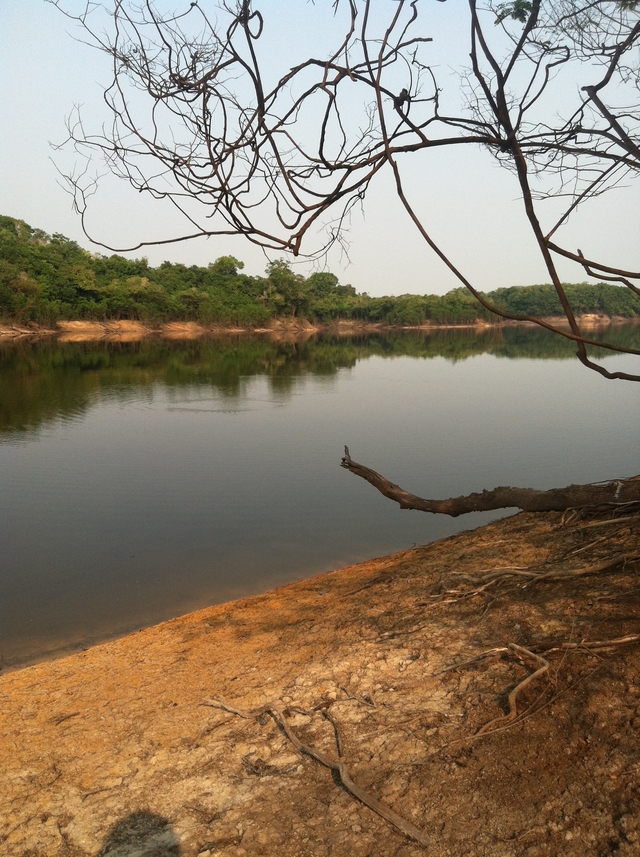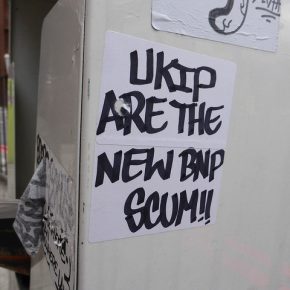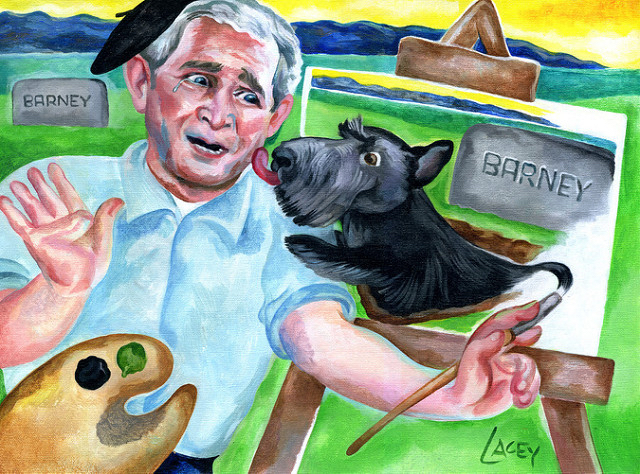I have become unstuck in time. My family, friends, and teachers keep pestering me about what I will do after I graduate. A college education is often seen as an investment in one’s individual future. But the very institution that taught me about the conservation methods that will sustain our planet is planning to invest $3 billion in fossil fuels for short-term economic gain.
And that is why I find myself unstuck, pitted against the future of the school, the University of California at Santa Barbara, that makes up all of my acquired knowledge. I should be looking forward. I should be looking to my first steps after graduation. But today I find myself thinking of an experience I had in Brazil six months ago, which UCSB helped to provide through a writing and research fellowship. In December 2016, while the world’s environmentalist conscience waited with baited breath for the realities of the incoming Trump administration back home in the US, I ventured up the Amazon River to witness firsthand a land that hangs in the balance, perhaps more precariously than most.
The future of the Amazon rainforest, by most climate estimates, will be one of reduced vegetation and slow desertification. But the people committed to saving it focus on the rich history of the land. Cherishing the forest, many see it as a true wonder of the world. As I finish my research, and my degree, I am stuck wondering the extent to which thinking about the rainforest negatively — focusing on our projections for its future demise — limits our ability to learn from the practices of the people who live there attempting to preserve it today. At the culmination of my college education, I am just beginning to learn that time is like the water of a river, unable to flow downstream without going all the way through the cycle. The people I met in Brazil are so in tune with this water’s movements that the rainfall itself becomes their alarm clock. This is their story.
The summer solstice marks the end of snowfall on the Andean peaks of South America. And when this snow melts, it embarks on a journey: 4,000 miles of twists and turns piercing the dense jungle, irrigating trees, feeding flocks of birds, bisecting expanding cities, eroding fallen roots and filling piranha gills. In this race to the ocean, the water takes the course of least resistance, shaping the land, as well as the lives of Brazilian fishermen. On some bends, the water deposits sediment on the riverbed. On others, the river erodes the land away. Lakes form between these turns, moments where the water pauses on its journey, essential moments that provide for the region’s ecosystem. Like the water, I was able to stop at one of these lakes on my journey up the Amazon. In Lago Preto, I found that a journey’s story is definitely not about where the water goes, but the chance to stop — and listen to its unique impact on a select group of people.
Lago Preto — the black lake — plays home to a wide range of life co-existing in an efficient manner, like every other lake along the Amazon River. Everything that dies by the end of an Amazon day reenters the rainforest’s system by dawn. Os abutres, vultures, peck at the remains of the fallen onca, jaguar. A collapsed tree creates space for mosses, sprouts, vines and bushes. This delicate balance exists in a land of two distinct seasons. Here, there is no summer, winter, spring, or fall. There is only the rainy season and the dry season, or, as the lake sees it, the high season and the low season. This binary pattern structures the natural life of the rainforest. If too many predators exist, other populations suffer.
The story many people hear about the Amazon is the human population causing destruction of the natural cycle. But Lago Preto is a testament to conservation. Indeed, the people of Mara’a interweave themselves into this lake’s ecosystem.
Only one building marks the shoreline of this pristine lake. A rugged floating house, the Mara’a Posto Avançado, watches over the entranceway to the lake, floating on logs the size of the Parthenon’s columns. The watchtower rests at the conjunction of the Rio Japura and Rio Solimoes tributaries. This outpost lies where the water—the agua dulce, as the locals say—enters the lake every year to provide for birds, fish, dolphins and people.
This lake is a microcosm of the many places the rain falls in the Amazon, with thousands of fish species, including the tambaki, piranha, the gasa and the legendary pirarucu, also known as the arapaima. The Posto Avançado is the headquarters for the Lagu Pretu Colonia de Pescadores. The colony, of about 60 fishermen, has set up a spectacular system in order to regulate the amount of people that enter this lake and controls the amount of fish that can be taken. Last December, I had the privilege of accompanying three of these fisherman, Eduardo, Mikael, and Jonesea, on their annual expedition.
When we first arrived at the Posto Avançado, we encountered Diogo lounging on the porch. He wore a wide-brimmed straw hat tilted over his face to protect him from the tropical sun. He was drinking a fragrant tea made from the bark of a pimentia tree, which tastes like anise and the forest topsoil. Most of Diogo’s existence plays out in this one-room fort, which floats in the middle of a tranquil lake. Here, Diogo’s life mimics that of the rainforest’s serenity. Positioned here for seventeen years, Diogo is the conservationist equivalent to the lake’s security guard. He doesn’t take long to search our 10 x 2 hollowed-out canoe. The only gear these fisherman bring on this trip are three hand-carved wooden spears, a fish net, two machetes, a waterproof tarp, and, of course, a couple bottles of Cachaça: the famous Brazilian sugar-cane spirit.
Diogo enforces the Colony’s regulations on fishing in order to maintain the pirarucu population. Pirarucu are the quintessential Brazilian game fish. Famous abroad because of nature television shows, such as Animal Planet’s River Monsters, these trophies weigh upwards of a quarter-ton and grow to longer than our canoe. Each fish can be sold in markets for up to 2,000 reals, or approximately $700. A delicacy around the country, these fish are sought by many, and often exploited as a food source. In many regions throughout Brazil, the pirarucu population gets decimated by commercial fishing. Because of Diogo and the little known conservationist state he represents, Lago Preto and the Colonia de Pescadores represents a medium. The pirarucu consumption and the natural lifecycle of the ecosystem remain in balance.
In Brazil, the power of conservation lies at the state level. Lago Preto is a part of the State of Amazonas’ Ecológica Reservado de Japura, an area of reserved land the size of Kentucky. As a major feature of this reservation, the Colonia de Pescadores has been a leader in conservation methods within this reserve. In order to protect the land that provides them with resources to survive, the fisherman set up a strict system of pirarucu fishing in 1982. There is only one fifteen-day window for the fisherman to catch pirarucu at Lago Preto. But, at $700 a head, it only takes these fisherman 20 fish to earn their entire salary.
During this designated period, the summer solstice, when the dry season ends and the rainy season commences, Lagu Pretu is at its lowest point. “Quinze dias.” Diogo explaines, “Para Pescadores, madrugada do ano.” He equates the fifteen-day transition from dry to rainy season to that of a sunrise on a grand scale, the dawn of the year, or madrugada do ano. It doesn’t follow a calendar date, but the time between the new moon and the full moon during the solstice month. The Colonia established this 15 days as the only permissible season to catch pirarucu. The rest of the year allows the fish population to rise with the water-level of the lake.
Diogo bears us good luck as we fire up the outboard motor of the canoe and head out. An Amazon commute: the fishermen go out for long days on the lake. They push the canoe through dense swamp and groves of trees possessing every shade of green in the color dictionary. It is grueling work. But Eduardo, Mikael and Jonesea have mastered their trade, and they continue through the thick mud with a larger sense of this lake’s value. The fishermen understand these fish as both a source of food and a source of income. The Colonia de Pescadores unites these men under the common goal of protecting the land that serves them.
Obviously, there is a degree of isolation in the Colonia. Mikael, having lived his twenty-six years in Mara’a, had never met anyone from the United States before me. He was thrilled to share the bewilderment of Lago Preto, and found my attempts to bushwhack with a machete amusing. He drove the canoe expertly through the narrow tributary, avoiding low hanging mangrove trees and floating logs. Mikael navigates through the low areas of the lake like a commuter on a busy freeway weaving through traffic. He is muito animado for this fishing season.
Bleached and weathered denim shorts, an unbuttoned polo shirt, Havianas sandals, his baseball cap in tatters: Mikael dresses like someone who is not afraid of what he might get into. Despite the constant smile, Mikael is serious when it comes to the rainforest. He knows the animals that lie below these murky waters are not creatures to trifle with. The lake is low, and we have to push the canoe through the mud in some sections so as not to clog the prop. But the low water level of the lake is advantageous for fishing. In the shallow water, the fish are much closer to the surface, and thus much closer to Mikael’s spear. The estimated population of 30,000 pirarucu in Lago Preto are consolidated into a small section of the lake. The section Mikael knows like the back of his hand.
“Lança! Lança!” Mikael beckons for a spear. Poised on the bow of the canoe, he stands ready to release at any second. Sometimes he will wait an hour before getting the chance to catch a pirarucu. The entire time, he is without movement. Looking through the murky water, he watches, silent and still.
With a flick of the wrist, Mikael plungers the spear into the water with the precision of an Olympian javelin-thrower. Shiny red scales flash through the water as this mighty fish thrashes to the surface. The spear’s barb is lodged. The three fishermen pull with all their might against the of the arapaima. The canoe rocks violently and water splashes in, creating a slurry of muddy river water, fish scales, and blood on the deck of the canoe.
Mikael doesn’t boast about the victory. He honors the fish as another member of the rainforest, whose moment of harvest has arrived. When Mikael hoists the fish, it stands as tall as he does, and probably weighs as much as him too. For Mikael, Catching the pirarucu is an honor. It also constitutes a commitment to the lake, because the fisherman knows the effects of his success fit into Lago Preto’s regulated wellbeing.
In the glow of morning light, Eduardo heads down to the canoe to prepare for his day on the lake. He secures a fishnet. Unlike Mikael, he is the kind of fisherman who lets the fish come to him. Looking for tambique, a smaller and tastier fish also native to this lake, Eduardo demonstrates patience in his fishing style. And to untangle 30 meters of thin fishing wire, wade out into the shallows, and stake the net into the mud indeed requires a certain level of forbearance. Eduardo, wearing a Simon Bolivar t-shirt, cargo pants and the wooden rosary he takes everywhere, undergoes this whole endeavor while singing his favorite verse:
Sorrisos, lembranças, belos sentimentos,
De transformações e de renascimentos,
Praias, viagens pela madrugada,
Nossa rotina era o pé na estrada.
In that peaceful morning, as we sit by the river, watching the tambaqui fill the net, I have the chance to hear how Eduardo got to be such an experienced fisherman and harmonious survivalist.
Like the meeting of the Japura and Solimoes rivers that form this lake, Eduardo is a culmination of two unique cultures that landed him in this location. His mother is Brazilian, but he grew up in his father’s home country, Belgium. When he was seventeen his mother brought him to the rainforest for the first time, he fell in love: with the land, and also with the woman he would eventually marry, Marcela. He gave up his home in Belgium for a life in Amazonas, trading the luxury and privilege of Europe for the balance of Mara’a.
To decide on the Amazon was one thing. To assimilate, and to gain acceptance, was easier said than done. When Eduardo wanted to marry Marcela, her father asked Eduardo, “Can you fish? Can you hunt? Do you have a job to provide a house?” Eduardo, with no experience in the forest, was disregarded. Initially, the woman’s father refused to grant him permission to wed.
“But I learned.” Eduardo explained, “I had to learn.”
The family’s men were excellent fisherman and survivalists, willing to teach Eduardo how to survive. In order to develop the necessary skills, he spent two years learning fishing and hunting methods. He learned the dangers posed by animals like alligators, jaguars and snakes. He learned the plants that can act as medicine and the ones that are poisonous, the currents of the river in both the high and low season, as well as the hundred and one ways in which a machete is an essential tool in the Amazon.
In this training, Eduardo became familiar with Lago Preto and the surrounding rainforest. Having the skills to survive on just what the lake provides enhances his appreciation for this extraordinary environment. He strives to protect the diverse species that make his home so spectacular.
Now, he wants to share his home with others. Eduardo helped me get to Lago Preto, explaining to Diogo the value of bringing outside influence to help the conservation efforts. He knows that ecotourism can be a good way for the colony to make money besides the fisherman’s entrance fee. If more people come to see the majesty that this area has to offer, more people will help the Colonia’s mission to defend it.
Beyond the pirarucu population conservation, the fisherman protect everything from the hoatzin to the caiman, the tambaqui to the trees, the prehistoric animals to those yet to be discovered. One of the efforts of this conservation project at the Posto Avançado is to help the tortoises. Due to the large number of predators, the tortoise population is extremely volatile. Local inhabitants harvest and protect tortoise eggs, and help them survive to three months when they hatch. Protecting the newborns ensures that the important species can maintain the food network web and biodiversity of the lake.
Now twenty-seven, Eduardo works hard to serve the place that continuously serves him with everything he needs. As we pull in the net to gather the seven tambaqui slated to be our dinner, he sings his song again, and I begin to translate. I finally understand:
Smiles, memories, beautiful feelings,
From transformations and rebirths,
Beaches to travel by dawn,
Our routine is the feet on which we move,
Living through ten years of binary Amazon seasons, Eduardo knows that drastic change happens in this landscape, and the natural flow of those the transformations afford the land its wealth.
In a memorable line from his novel The Mosquito Coast, Paul Theroux writes that the leaves of a the rainforest looked “like wet dollar bills.” Recalling Eduardo, who traded Europe for his home at Mara’a, the health of the leaves indeed indicate the health of an economy that changes with every rise and fall of Lago Preto. He appreciates the current, and how each bend of the river creates a sustainable investment for the future.
That night, sitting around the campfire, cooking our day’s catch, I was able to hear more of the story of how these fisherman, Eduardo, Jonesea, and Mikael live, breathe, and die by this lake, and the ways of the Colonia. They connected with a different perspective on education, the kind I relate to as I enter the ‘real world’ of post-graduation life.
Back in Mara’a, Jonesea attended the local school when he was a child. Although the school’s library was limited to a few dusty shelves, Jonesea excelled at reading comprehension, passing the tests easily. His intelligence earned him a rare spot to study at the Federal University of Amazonas. Located in Manaus, the major city 500 miles downriver, this university is a chance not many of these local fishermen obtain.
But just three days after arriving in the city, Jonesea he got into bar fight. In the scuffle, Jonesea knocked out another man’s front teeth. After legal action, Jonesea was required to pay for the man’s medical fees. To settle this bill, Jonesea had to use the money he had saved for an education. Left without enough to attend the university, Jonesea had no other choice but to return to Mara’a. Now at thirty-eight, he says that was a lifetime ago.
“In the 20 years I have been here, I have learned more than I could in the city.” And in every one of those twenty years, Jonesea has seen the rain storms pass through and watched Lago Preto rise and fall. He endures the dry season’s heat. He enjoys times of plenty. He perseveres through scarcity. As anyone who has spent as much time as Jonesea in the rainforest knows, the cycle of high and low, like that of night and day, are connected. Jonesea’s natural education has afforded him an unparalleled ability to understand and predict what goes on around him.
Jonesea has learned how this water, in its ever-changing form, affects the life within the rainforest. On a clear day, he warns “chuva,” and sure enough, it rains. In the gaps between the clouds, he points out the formations of stars in the night sky. I see new constellations. “Esta.” He points over the horizon to a group of five stars peeking over the horizon of the shadowy forest canopy. “O cruzador de sul.”
The Southern Cross is the Brazilian equivalent to the North Star. The five stars point south, helping those navigating through the forest to find their way. A dweller of the Northern Hemipshere, like me, doesn’t realize that the world has been turned upside down until Jonesea points out an entirely new vision of space. He didn’t learn this from astronomy class or a physics textbook, but knows it as a part of his environment. The campfire dwindles as Jonesea is finishing his story. The words dwindle with the embers of the fire, as the night restores stillness.
In the morning, we roll out of our hammocks and prepare for the day’s work. Using the wide breadth of his fishing experience, Jonesea disassembles the camp, starts a fire for tea, and loads the fishing nets, spear and tarp into the canoe in the blink of a dreary morning eye. He takes longer to help me tie a bowline knot. This is the education Lago Preto has given him.
Drinking pimentia tea, we watch eddies form along the muddy embankments. A marvelous white bird explodes from the canopy above: the gasa, an egret. The bird soars down to the water with the grace of an ice skater, as if every movement, from the outstretched wings to the bright orange beak, were perfectly in order. It expands its long, crane-like neck to the lake for a drink. The gasa commands a presence that made the world stand still. It floats on a small shrub in the middle of the lake, as if walking on water.
Due to the work of these fisherman in preserving the lake and establishing the conservation Colonia, animals like this gasa are able to survive. The bird embellishes the landscape, the animal intersection between earth and sky. Taking off again with three carefully orchestrated wing flaps, the pure white of the gasa soars into the clouds, blending into the heavens beyond.
When Jonesea sees the bird fly up above the trees and merge into the sky, he says
Ascendeu ao azul do céu nos seus próprios pensamentos.
Ascended to the blue of the sky in her own thoughts.
He continues to tell me how important this animal is to every other forest being. And then, in profile, with a great smile watching the bird disappear over the horizon,
Não pensou no seu futuro, ela era o momento.
Not thinking about the future, just the moment.
Jonesea’s centered mindset is a result of Lago Preto, a vibrant source of life. The forest has taught Jonesea and the other fisherman that investment in the future is simply about conserving the present.
The Amazon rainforest is constantly referred to in the terms of loss. But what I found is that there are incredibly diverse people interconnected in a cycle with these trees, fish, birds and vines. They possess intrinsic knowledge of how to protect and serve the land so that it can continue to protect and serve its people. We can learn so much from them, if we only set aside our preconceptions about their home.
Photographs courtesy of the author. All rights reserved.














